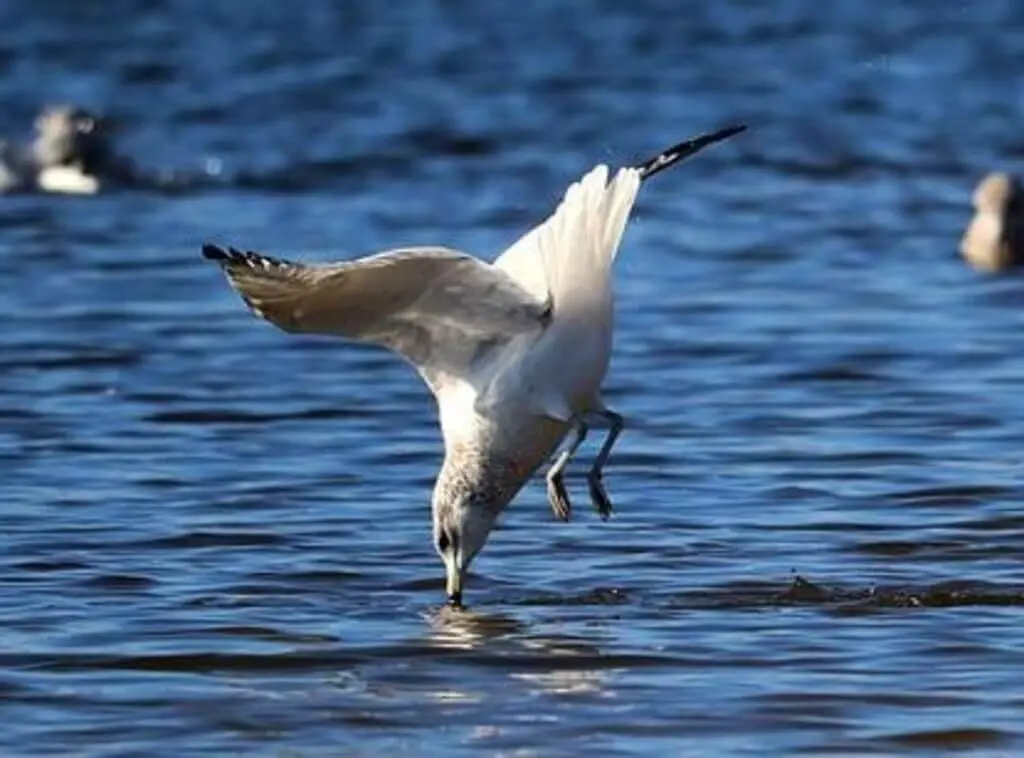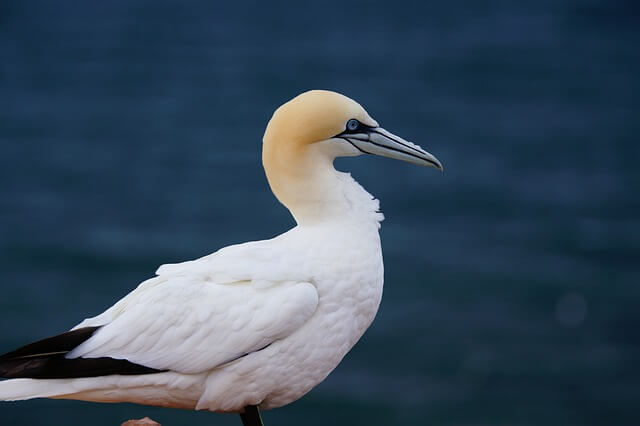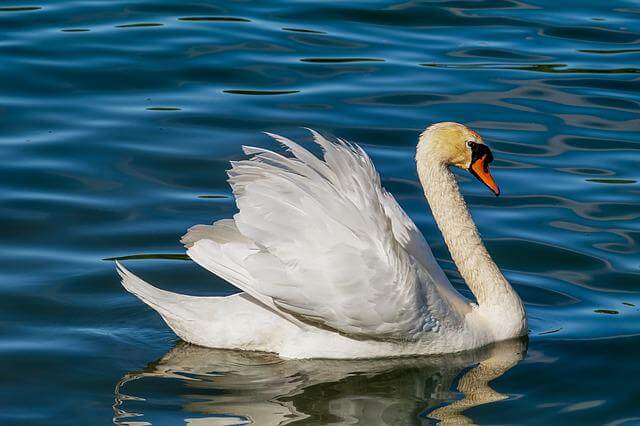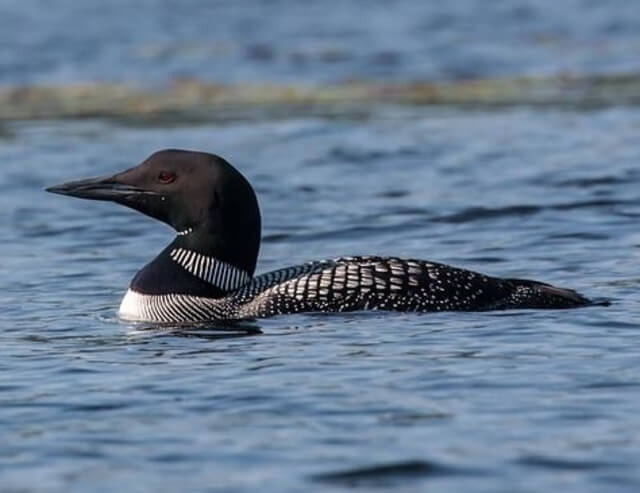In this article, we will explore 17 remarkable birds that possess the incredible ability to swim underwater. These avian swimmers are a testament to nature’s diverse and astonishing adaptations, allowing them to navigate both the skies and beneath the water’s surface. Join us on this journey as we delve into the captivating world of Birds That Swim Underwater.
Table of Contents
Types of Birds That Swim Underwater
Gannets
Gannets are a type of seabird that is known for its aerial acrobatics. But what you may not know is that these birds can also dive under the water to catch their prey. In fact, gannets can stay underwater for up to two minutes!
The gannet’s diving ability allows it to hunt effectively in both shallow and deep waters. Gannets typically dive from high altitudes, and use their powerful wings to help them speed through the water before emerging with a fish in their beak.
Despite their impressive diving skills, gannets are not always successful in catching prey. In fact, only about one-third of all dives result in a catch.
Boobies

Boobies are amazing birds that can swim and dive underwater to catch prey. They have specially adapted feathers on their wings and body that help them stay submerged for long periods of time.
Their long, pointed beaks are perfect for catching fish, squid, and other small aquatic creatures. Boobies typically hunt in large flocks, so there is always someone watching for prey below the surface.
When they spot something edible, they quickly dive and snatch it up before returning to the surface. It’s a pretty impressive sight to see these birds swimming and diving beneath the waves!
Diving Ducks
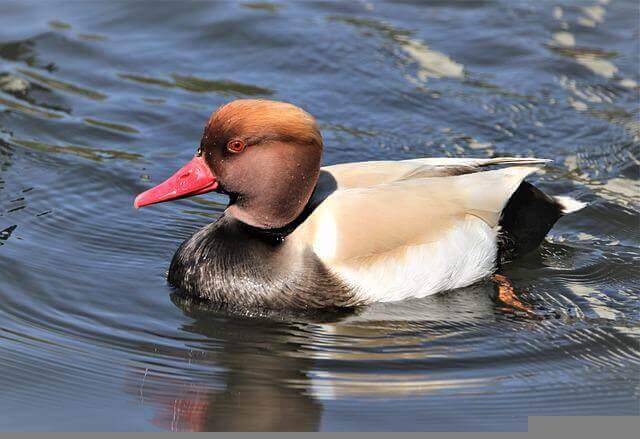
Diving ducks swim underwater to find food. They can hold their breath for a few minutes and dive to the bottom of a lake or river to get food. Some diving ducks, like the long-tailed duck, can dive to depths of 200 feet to forage.
Ducks are able to swim underwater for extended periods of time due to their ability to close off their ears and nose.
Their feathers also help keep them dry while swimming. Ducks use their webbed feet as paddles to propel themselves through the water. They can dive to depths of several feet in search of food or shelter.
Swans
While Swans are mostly known for their seemingly graceful glide across bodies of water, they are actually quite versatile in their movement and can swim underwater when needed. In fact, the majority of their time spent in the water is usually spent floating rather than diving.
However, this doesn’t mean that they are averse to diving – on occasion, they will dive to catch food or evade predators. Swans are able to submerge themselves by tucking their heads and necks under the water and using their powerful legs to push themselves forward.
The swan’s long neck is capable of holding extra oxygen, and because of this characteristic, they typically hold their breath for up to 20 minutes before resurfacing.
Pelicans
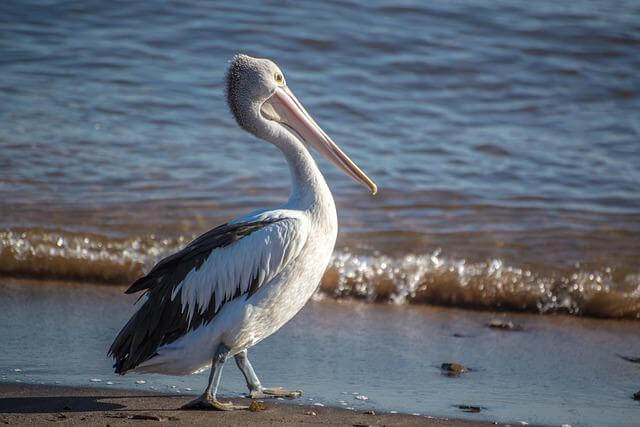
Pelicans are able to swim underwater for extended periods of time due to their specially adapted lungs. Unlike other birds, pelicans have lobed lungs, which allow them to take in more air.
This extra air helps pelicans stay underwater for up to 20 minutes at a time. In addition, pelicans have a layer of fat under their skin that helps keep them warm in cold water.
American white pelicans are particularly good swimmers and can dive up to 100 feet below the surface. They often use this ability to search for food, such as fish and crustaceans.
Diving-Petrels
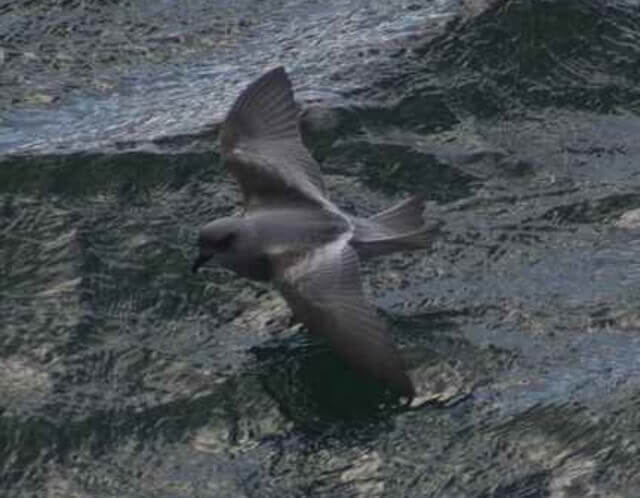
Diving-petrels are a seabird that can swim underwater. They can stay submerged for up to 15 minutes and sometimes more, and dive to depths of up to 34 meters.
Their wings have evolved specifically for swimming, with long, pointed tips that help them cut through the water. This allows them to forage for food in the deep waters where other birds cannot go.
Diving-petrels use their wings as paddles to help them swim underwater and can move quite quickly, reaching speeds of up to 6 kilometers per hour. They are found in the Pacific, Atlantic, and Indian oceans and prefer cool, temperate waters.
Shearwaters
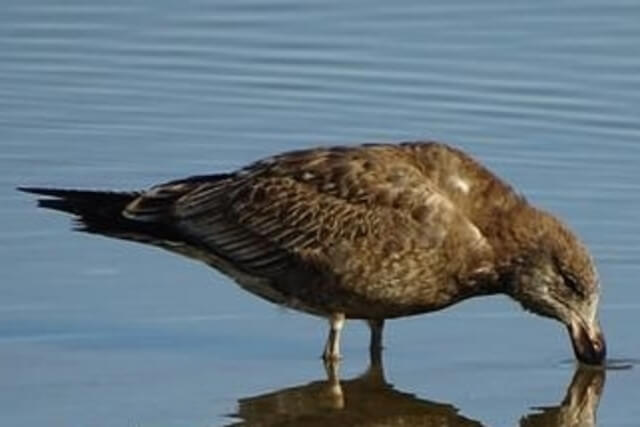
Shearwaters can dive and swim underwater to depths of up to 70 meters for periods of up to 15 minutes. They are able to do this by using their specially adapted wings, which act as efficient paddles, allowing them to propel themselves through the water.
Shearwaters also have a number of other adaptations that help them when diving, including a large oil gland that helps them stay warm in cold waters and a layer of air-filled cells called pneumatization that keep their brains oxygenated even when they are submerged.
Grebes
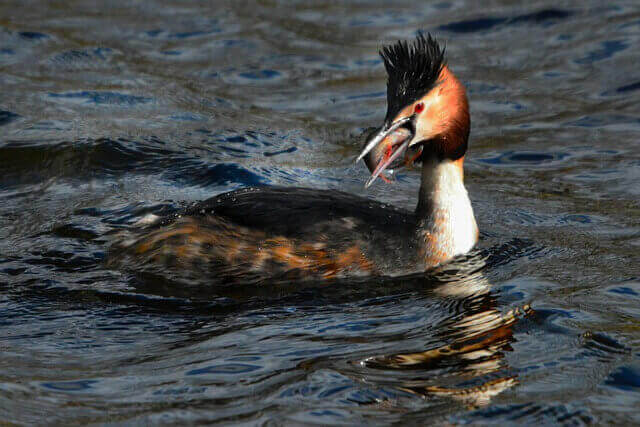
Grebes are a type of seabird that is known for its diving and swimming abilities. They can dive to a depth of almost 20 feet (6 meters) below the surface and remain submerged for about 30 seconds.
The dives are typically short, but the birds can swim underwater for up to a minute if they need to. Grebes use their powerful wings to propel themselves through the water, and they are also able to use their wings to steer while underwater.
This allows them to navigate through tight spaces and search for prey in difficult-to-reach areas.
Loons
Loons are known for their distinctive calls, which can be heard from miles away across a quiet lake. But these large aquatic birds are also impressive divers and swimmers, capable of staying underwater for long periods of time while hunting for fish.
Their diving skills allow loons to stay submerged even when there is a strong current.In fact, loons can stay underwater for up to five minutes! And their powerful wings help them swim quickly through the water, catching prey before it has a chance to escape.
While loons are primarily fish eaters, they will also consume other aquatic creatures, such as amphibians, crustaceans and insects. They typically dive to depths of around 20 meters to find food, but have been known to dive as deep as 60 meters.
Cormorants

For Cormorants, diving to catch a meal is all in a day’s work. These aquatic birds can spend up to 30-70 seconds underwater, and have been known to dive as deep as 45 meters.
Cormorants use their powerful wings to help them dive quickly and swim smoothly through the water. They propel themselves forward with their webbed feet, using their tails for steering.
Once they’ve found their prey, cormorants use their sharp beaks to snatch fish right out of the water. They then swallow their catch whole, without having to come up for air.
Penguins
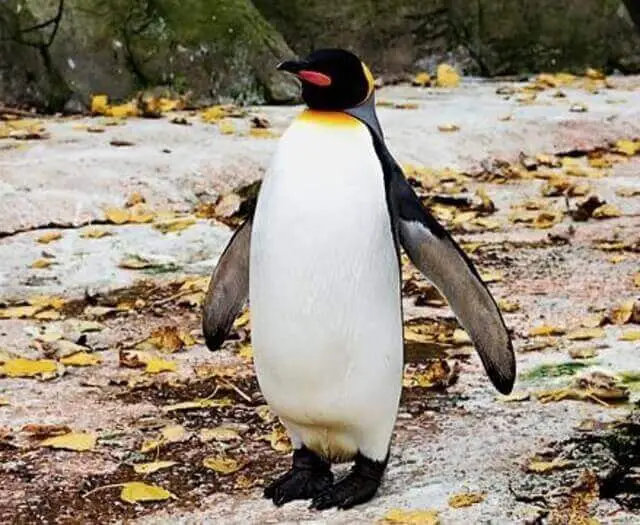
Emperor Penguins are the only birds that can dive to over 455 meters and stay submerged for up to 30 minutes in a single breath! The average dive is about 272 meters deep and lasts around 18 minutes.
Penguins have several adaptations that allow them to dive so deep. Their feathers are waterproof, and their skin is covered in a layer of oil that helps reduce drag.
They also have a very efficient circulatory system that helps conserve oxygen while they are underwater.
Puffins

In late summer and early fall, Atlantic Puffins can be seen plunging into the water from high above to catch fish. They often remain submerged for 20-30 seconds, and have been known to dive for up to 60 meters (197 feet) deep.
The puffins’ dives are typically short, but they can swim long distances underwater. They use their wings as efficient paddles, stroking them back and forth while they hunt for prey.
After catching a fish, the puffin will surface and swallow it head first. Then it will take a quick breath before diving back in for another catch.
Coots
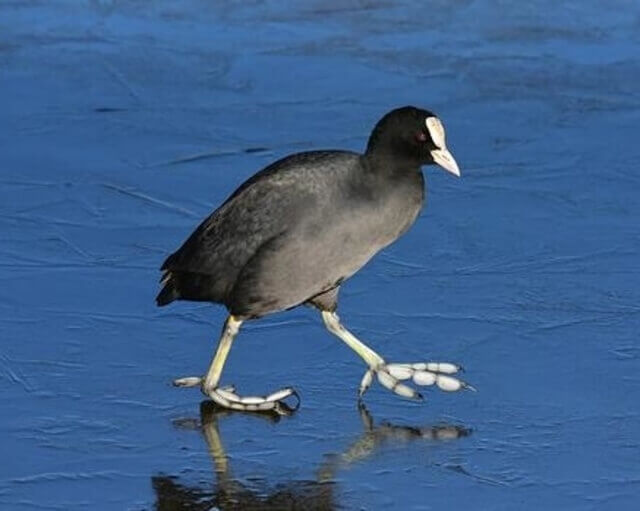
Coots are small, black water birds that can be found near water, in North America and Eurasia. They are well adapted to swimming and diving and can stay submerged for up to 15 seconds.
They have been known to dive as deep as 7 meters. Coots use their webbed feet to propel themselves through the water and their sharp beaks to catch fish.
They are able to swim quickly and efficiently, making them difficult prey for other animals in the water.
Geese

When most people think of geese, they think of the animals waddling around on land. However, these birds are also capable swimmers and divers. In fact, a group of geese can stay submerged for up to 10 seconds and dive up to 12 meters deep.
One reason why geese are such good swimmers and divers is their webbed feet. These appendages act like flippers, allowing the geese to move through the water with ease. Additionally, the birds have a layer of oil on their feathers that helps them stay dry while swimming.
Geese are also able to swim and dive underwater because they have a strong respiratory system. Their lungs are specially adapted to extract oxygen from water, which allows the birds to stay underwater for extended periods of time.
American Dipper

The American dipper (Cinclus mexicanus) is a small songbird of the genus Cinclus. It is the only member of the genus endemic to North America. The American dipper is found in western North America, from Alaska to central Mexico. They are common in many types of aquatic habitats, including streams, rivers, lakes, and ponds.
American dippers have several adaptations that allow them to live underwater for extended periods of time. Their feathers are very oily, which helps keep them waterproof. They also have a layer of subcutaneous fat that helps keep them warm underwater.
Their feet are webbed, and their bills are specially adapted to catch food underwater. This little bird can dive up to 6 meters deep and stay submerged for up to 15 seconds.
Anhingas
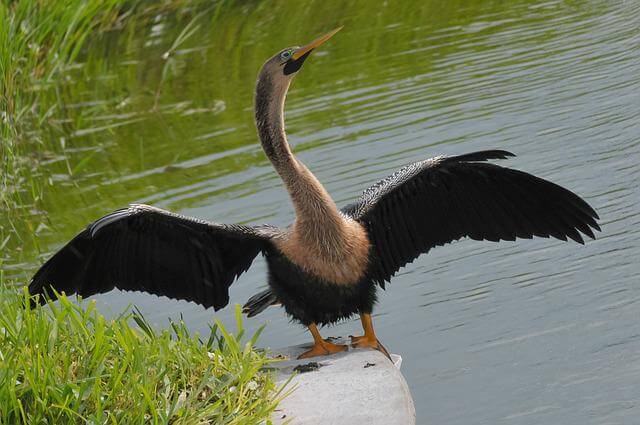
Anhingas are one of the few bird species in the world that can dive and swim underwater for more than a minute. They are able to dive up to 18 meters deep in search of food, which mostly consists of fish, amphibians, and crustaceans.
Anhingas have several adaptations that allow them to stay submerged for long periods of time. They have a very flexible neck that allows them to turn their head in all directions, which helps them spot prey underwater.
They also have large webbed feet that provide propulsion when swimming, and their feathers are not water-repellent, unlike pelicans, and ducks.
Terns
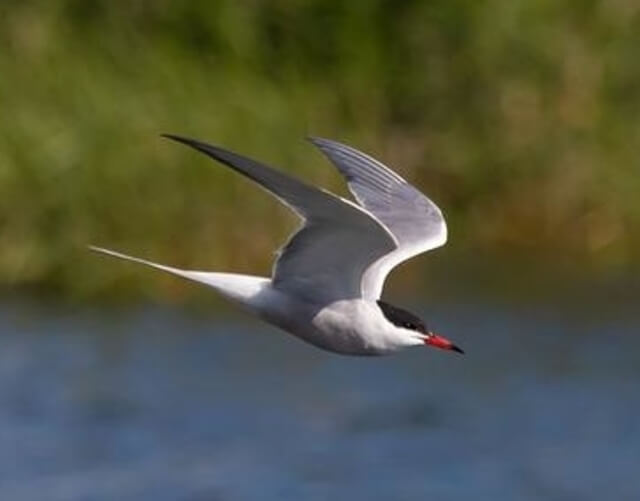
A tern is a seabird that is known for its long and slender wings. Terns are usually white in color with some black markings on their wings.
They can be found near both coasts of North America. Terns are expert flyers and can dive underwater for a couple of seconds to catch fish.
They will usually dive about 20 inches deep, but can go down as deep as 3 feet if they need to.

